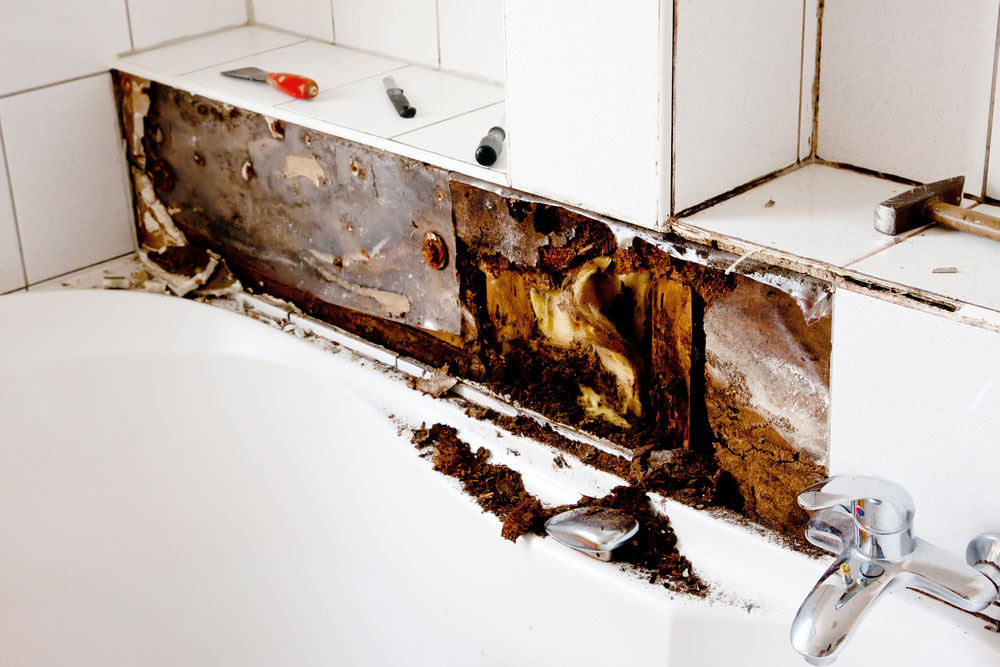Exactly How to Prevent Bathroom Water Damage
Exactly How to Prevent Bathroom Water Damage
Blog Article
They are making several good points on Preventing Water Damage in the Bathroom in general in this article followed below.

The shower room is very prone for damp build-up as well as prospective water damage because of the frequent use of water in it. This article offers simple inspection techniques to aid identifying water damages threats.
The constant use water in the restroom makes it incredibly susceptible for moist accumulation and also possible water damages. By examining it frequently, you can reduce water relevant problems.
The complying with set of inspections is easy to execute and also must be done once in every three months in order to maintain your shower room in good shape and to stop possible water damages caused by the bath tub, the shower, pipeline joints as well as plumbing, sinks, cabinets, as well as the bathroom
Do not forget doing these evaluations as well as be complete while doing them. Keep in mind that these simple examinations can save you a great deal of money by offering early indicators for water damages
Sinks as well as Cabinets
Sinks and closets are subjected to moisture and also humidity daily as well as are frequently forgotten. Examine regularly under the sink as well as on the countertop over it. Repair any kind of drip in the trap as it might suggest drainpipe issues. Look around the sink, sluggish draining pipes might indicate an obstructed drain. Change sink seals if they are cracked or loosened.
Bathtub as well as Shower
The shower and tub require unique attention as well as upkeep. Inspect the floor tiles as well as change if broken. See to it that there is no missing cement between the ceramic tiles. Evaluate as well as change broken caulking at joints where the wall surfaces meet the floor or the bath tub. Obstructed drains and also pipes troubles will avoid the bath tub from drying as well as might suggest significant issues underneath the bathtub. Speak with a specialist right away to stop structural damages. Take notice of discolorations or soft areas around the bath tub walls as they might indicate an interior leakage.
Plumbing
Signs for water damage are tough to detect considering that most pipes are mounted inside the walls.
Pay special focus to flooring as well as wall surfaces wetness and also stains as they may suggest an invisible plumbing problem. Inspect dampness levels in adjacent areas too.
The Toilet
The toilet is a prone water joint. Check the water lines and look for leakages around the toilet seat, in the hose pipe, as well as under the water container. If you detect any type of indications of dampness on the floor around the toilet, check for leakages in the toilet edge and tank seals.
Know that hanging commode dish deodorants enhances the possibilities for obstructions.
TIPS TO PREVENT WATER DAMAGE IN THE BATHROOM
The average household uses approximately 80-100 gallons of water per person per day. For a family of 4, that's almost 2,500 gallons of water a week! The largest portion of this consumption comes from bathroom use. Flushing the toilet uses the most water, followed by taking a shower or bath. With that much water running through the home, water damage in the bathroom is bound to happen. Knowing how to spot signs of a water leak is essential to preventing long-term damage. This guide provides you with tips to reduce the impact of water damage on your bathroom.
CAUSES OF BATHROOM WATER DAMAGE
Pipe breaks are the most common cause of water damage we see in our daily jobs. The age of a pipe plays a large role in a pipe break as well as corrosion. Over time, the metal begins to break down, allowing water to escape. Frozen pipe breaks are also a concern in the winter months. Toilet overflows caused by paper products or children flushing inappropriate items. Degraded caulking around the toilet or bathtub can allow water seepage, sometimes behind the fixture, into the subfloor or walls. Condensation forms when the water in a pipe is cooler than the air temperature. Beads of water form on the exterior of the pipes, sometimes so much so that the water begins to drip and pool below. Sink or shower backups created by poor drainage. HOW TO PREVENT WATER DAMAGE IN YOUR BATHROOM
Inspect your toilet supply line for worn or frayed hoses and replace them as needed. Winterize your plumbing to prevent a frozen pipe break. Use vent fans to prevent condensation that can lead to mold growth. Routinely check and replace degraded caulking around your toilet or bathtub. Increase the temperature in your toilet tank and insulate your pipes during the warm summer months to keep condensation from forming. Use child safety locks on the toilets. Flush only toilet paper. "Flushable" wet wipes are actually not good for your plumbing system. Additionally, feminine hygiene products should not be flushed. Prevent water from escaping the tub or shower. Make sure shower curtains are in good condition. Inspect shower doors and replace the seal strip if necessary. Wipe up any water that accumulates on the floor and use bath mats. Water left to sit can cause damage to the tiles and flooring. Refrain from using bath products containing heavy oils to avoid a clogged drain.

As a keen reader about How to Prevent Bathroom Water Damage, I thought sharing that piece of content was sensible. Sharing is good. Who knows, you might be helping someone out. Thank you for your time. Please pay a visit to our blog back soon.
Contact Us Report this page